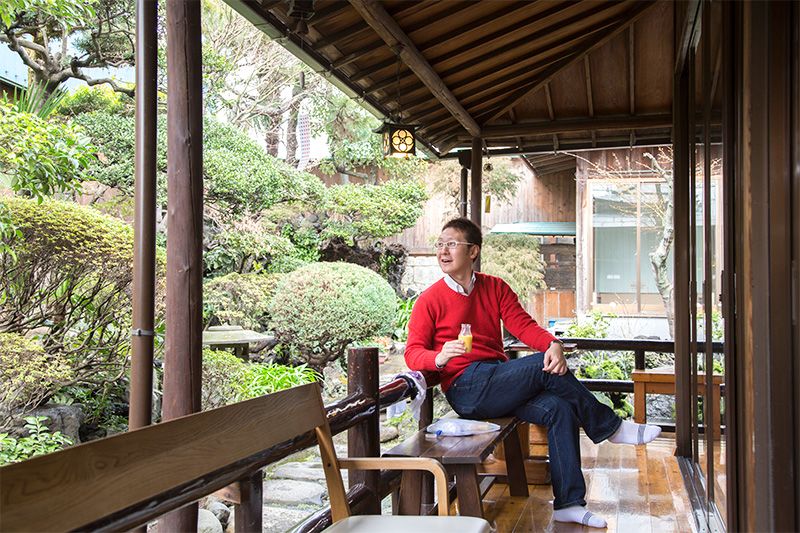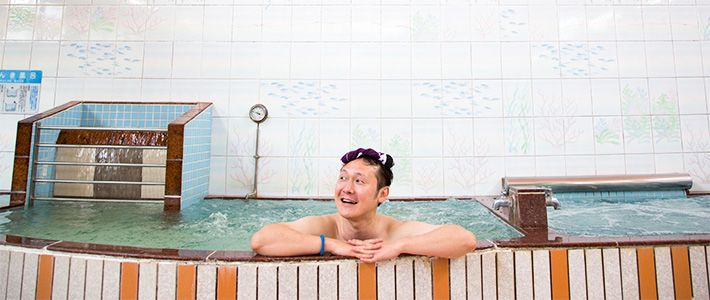
Public Bathhouses: Take a Dip in Everyday Japan
Bathhouse Basics: How to Enjoy a Japanese “Sentō”
Guideto Japan
Culture- English
- 日本語
- 简体字
- 繁體字
- Français
- Español
- العربية
- Русский
Ready for Bathtime
Comedian Furo Wakuzō leads the way into the bathhouse, pushing through the entrance curtain. He will be our guide to the pleasures and etiquette of taking a hot dip. Takarayu is a classic sentō in northern Tokyo and Furo will help us get the most out of it. You can pack a change of clothes, towel, shampoo, conditioner, and soap, but it is also fine to drop in empty-handed.
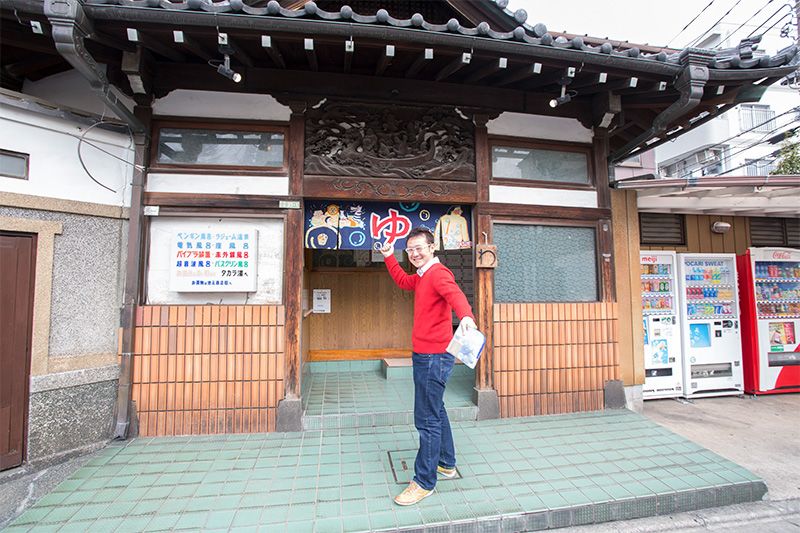 “Let’s go!” Furo is ready for bathtime.
“Let’s go!” Furo is ready for bathtime.
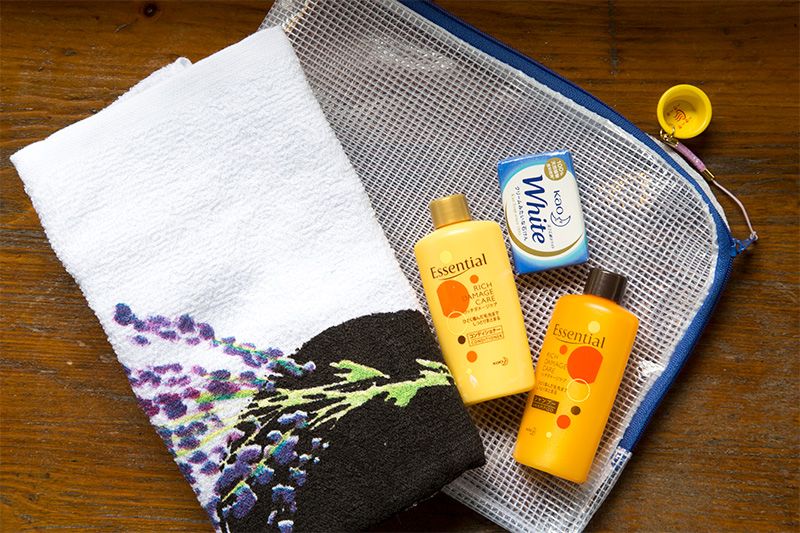 A bag with a small towel or washcloth and washing items can be handy.
A bag with a small towel or washcloth and washing items can be handy.
Through the noren curtain is the getabako, an area for storing shoes. Each of the locker-style compartments has a wooden key, so look for one with the key still in place to find an empty space. At Takarayu, bathers are responsible for their keys throughout their visit, but at other bathhouses reception staff may look after them.
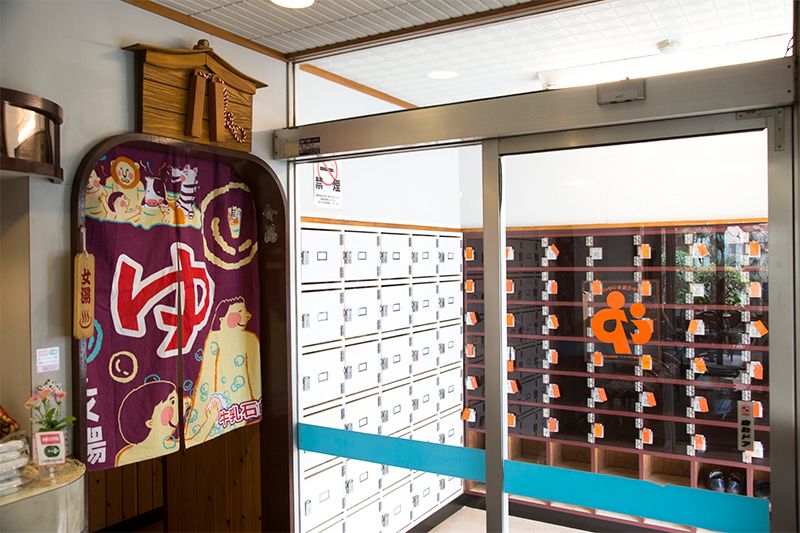 Be aware that boots and other large footwear may not fit in the getabako.
Be aware that boots and other large footwear may not fit in the getabako.
Tokyo sentō have a standard entrance fee of ¥460 (the price varies by prefecture). Pay at reception and buy any necessary supplies before continuing to the changing room. This is where men and women part company at Takarayu, but many bathhouses even have separate street entrances for male and female bathers.
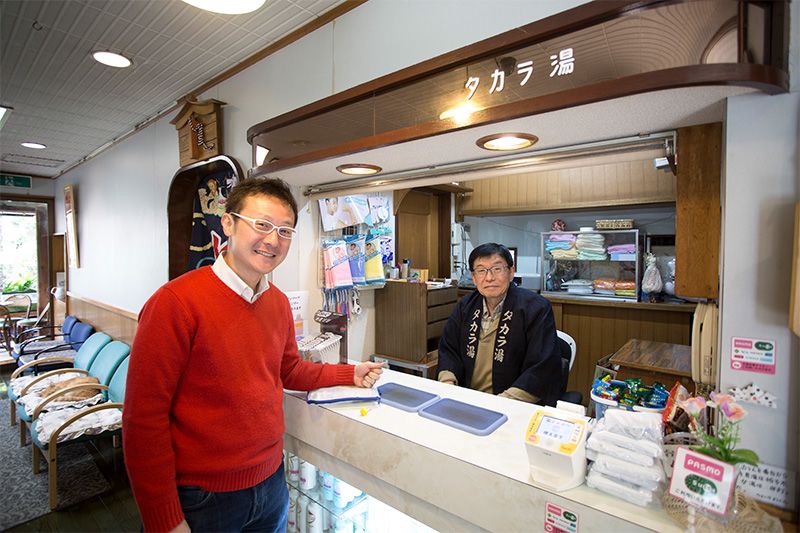 Razors, toothbrushes, and towels are among the items on sale at the reception desk.
Razors, toothbrushes, and towels are among the items on sale at the reception desk.
Wash and Soak
Take off your clothes in the changing room and put them in a locker together with your wooden getabako key and any other items. The locker keys are attached to wrist straps to wear while bathing. Take your shampoo and head for the baths, covering yourself with a towel. Make sure to shut the door tightly so the moist air from the bathroom does not escape into the changing room.
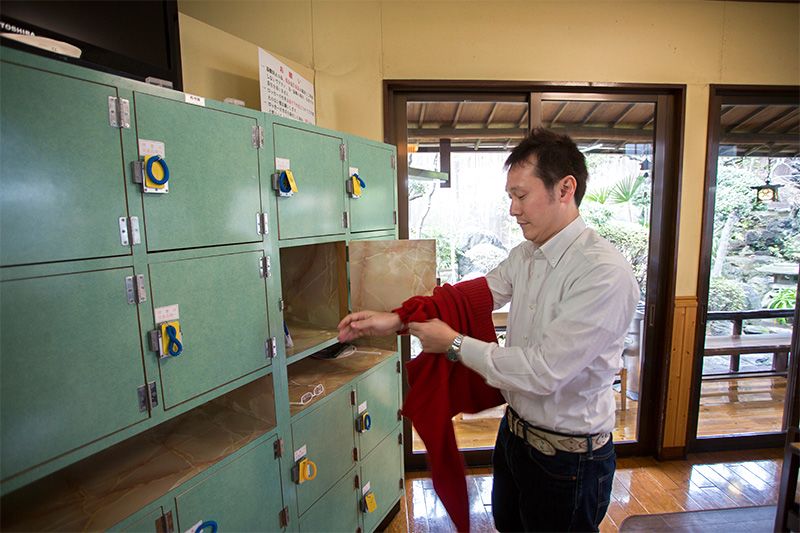 Lockers provide basic security, but it is best not to store anything too valuable.
Lockers provide basic security, but it is best not to store anything too valuable.
Pick up a basin and low stool at the bathroom entrance and sit in one of the unoccupied spaces in front of a faucet. At sentō you wash yourself before entering the tub. Some bathhouses supply free shampoo and bodywash, meaning you do not need to bring your own. Adjust your shower head as necessary, but be aware of people around you. If the water is too hot, you can change the temperature to suit you.
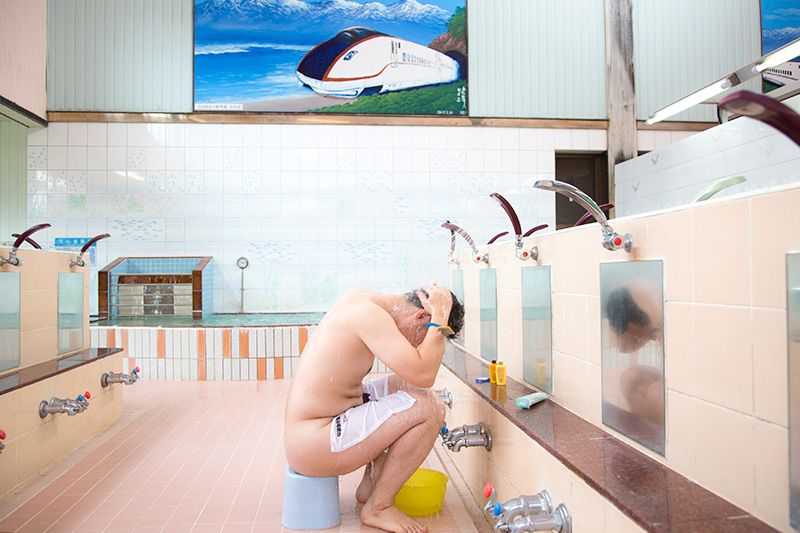 Furo scrubs himself clean before bathing.
Furo scrubs himself clean before bathing.
Return your basin and stool to the storage area before proceeding to the tub. Bathers often place their towels on their heads as it is bad manners to put them in the water. Another option is to leave your towel in a basin along with your washing items, making sure that the basin is not in other people’s way. If there is a cold-water tap, you can cool down the bathwater, as long as neighboring bathers do not object. Save any urges to swim for the pool, though, no matter how big the tub is.
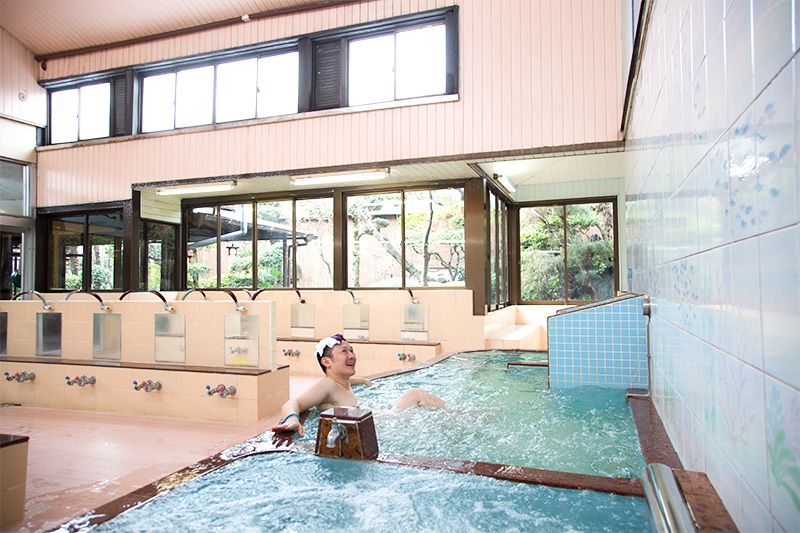 Soaking away the cares of the world.
Soaking away the cares of the world.
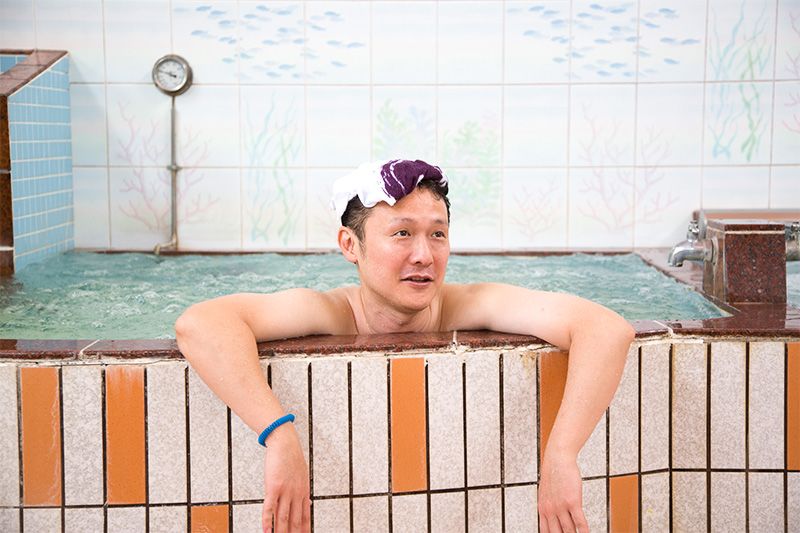 Furo models the classic “towel-on-head” look of the Japanese bathhouse.
Furo models the classic “towel-on-head” look of the Japanese bathhouse.
A Place to Chat or Just Relax
Before leaving the bathroom, wring out your towel and wipe your body dry. Dripping water in the changing rooms is considered highly impolite. Once you are back in the changing room, you can cool down your body at an electric fan, wiping any sweat away with your towel. Then get dressed again. Rehydrating with a bottle of milk or other cold drink bought from reception is the perfect after-bath activity. “The veranda at Takarayu is a wonderful place to relax and look out at the garden after a soak,” says Furo.
 Coffee milk, plain milk, and fruit milk. Bottled drinks like these are a postbath staple at sentō.
Coffee milk, plain milk, and fruit milk. Bottled drinks like these are a postbath staple at sentō.
The communal side of bathing is also part of its appeal. “As well as washing and freshening up, it’s fun to meet and chat with all kinds of people,” Furo says. He enjoys seeing older bathers chewing the fat with friends. As everyone sheds their outer layers in the bathhouse, it seems to have some mysterious power to return adults to the openness of childhood.
“Whether alone or with friends, it’s an enjoyable place to spend your time,” Furo adds. You can either plan to visit as a group or just enter on a whim. Overseas visitors should not hesitate to experience this classic Japanese activity. A basic knowledge of bathhouse procedures is all that is required.
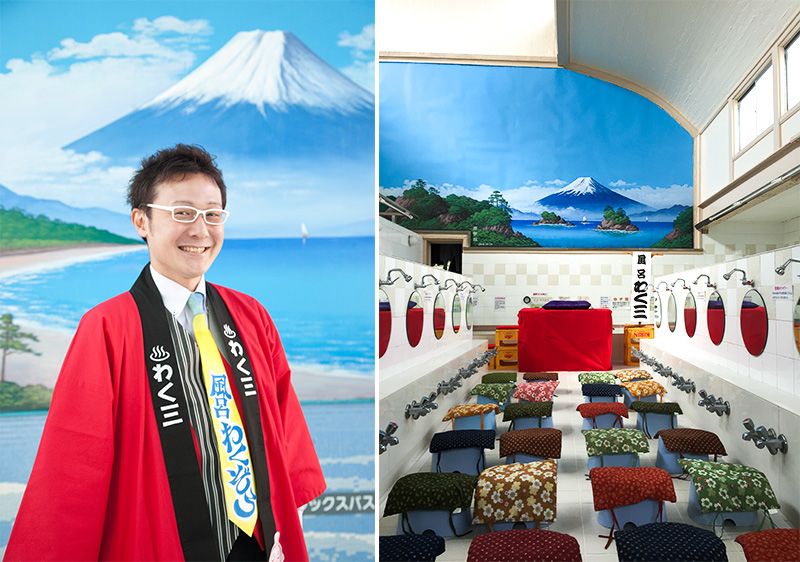 Furo performs comic routines at bathhouses sometimes. Here audience seats are lined up in the bathtub for a performance at a sentō in Kōenji, Tokyo.
Furo performs comic routines at bathhouses sometimes. Here audience seats are lined up in the bathtub for a performance at a sentō in Kōenji, Tokyo.
